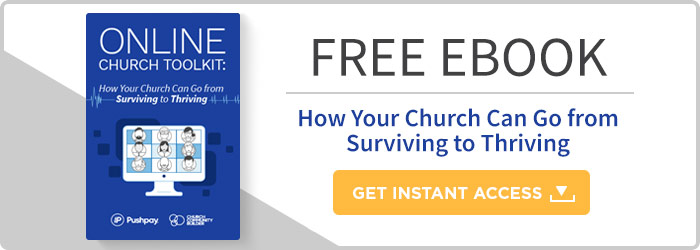5 Questions to Ask When Creating a Digital Church Strategy
I’ve been blessed to speak to groups of leaders across the country, consulting with them about effective digital strategies and what it means to have a dynamic web presence. The question I get asked the most is this: What’s the best digital platform to post our content to? In order to have a clear understanding of the answer to that question, you’ll need to think through your digital strategy.
Whether you’re doing this for your church, your church’s leaders, or for yourself, here’s five leading questions to ask yourself when creating a digital strategy:
1. What’s my digital baseline?
This is a crucial step we refer to as the audit. We need to better understand the current digital landscape of your church/yourself so that we know what progress steps to take.
Here you will go online to each social network and search for yourself. Do you have any open accounts that you haven’t tended to in a while? When’s the last time you updated your website or social media? How are people currently interacting with your ministry or leadership? What is the average time it takes you to respond to these interactions? Do you publish a mixture of content (e.g., text, image, video, etc.)?
As you’re finding accounts, you may need to go in and clean up your current presence. Close down abandoned profiles and remove content that’s irrelevant to both our audience and the purpose of our digital interactions.
Final thought here: People will be using social networks to search for your church, and they will draw assumptions about you based on what they see. What impression are you leaving? How would you describe your church’s brand? Does this clearly come through in your church’s online presence?
2. What do I want to happen?
This is where you identify your end goal for being online in the first place. Try to consolidate this down to one or two core purposes. As with anything in life, it’s about the strategy as much as it is about the tools.
Do you want more people in the seats at your services? Do you want more people to subscribe to your blog? Do you want to be identified as a thought leader in your community on a certain topic? Do you want to sell a book or curriculum? Are you speaking to your current church attendees or to people who don’t yet attend?
Identifying your end goal gives you clear direction in terms of creating content.
3. Who am I talking to?
Who is the target audience for your church’s digital strategy? The answer to this question helps you to determine which social media platform you should be utilizing the most. This may seem like a strange question for a church to answer, but it’s worth spending some time breaking down. Do you have a lot of young families and programs for young families? Is your high school program particularly well attended? Do you have a pastor on staff who is especially gifted in financial stewardship teaching? All of these can be used to determine the demographic of folks your church may be the best fit for.
A few rules of thumb:
- Start with the platform you’re most comfortable with (less is more).
- If you’re targeting young people, go to platforms where information is shared in a more visual manner. Try Instagram, Vine, or Snapchat.
- If you’re targeting women, check out the Pinterest platform. Pinterest maintains an online population of roughly 80% women and houses a healthy Christian community that welcomes new content.
- If you’re targeting men, they’re still active (along with women) on Facebook and Twitter.
- If you’re targeting leaders and executives, head over to LinkedIn.
4. What are my people talking about and gathering around?
Be an attentive observer of the digital landscape in your community. Who are the people creating the most engagement? What are the reoccurring topics? Are there outstanding questions that seem to always come up?
Who is already making the type of impact you’re seeking to make, and how are they doing it? Can you improve on what they’re doing or make it your own? Can you participate in the conversation they’re leading?
This is where we start to think about content. Visual content is winning right now, but blogs are still leading the pack in terms of search results.
Look around at the people whose presence you seek to emulate. What are they posting that has high engagement? Are they posting on trending topics? Do they have a dedicated hashtag that is being used in several other conversations?
5. What am I creating?
This is the last question you ask because the answer is based on the answers to all of the other questions.
The content you create should be based on your end goal—what you want “your people” to do.
The content you create has to be engaging to your target audience, so take a good look at the content they’re sharing. Listen to the conversations they’re having on their chosen platforms. How can you join those conversations with your content? How can you lead those conversations?
In closing, don’t feel like you have to reinvent the wheel. The digital landscape allows each of us to have as large of a presence as we desire. It takes authenticity, strategy, consistency, and quality media. Start with the platform you’re most comfortable with, and grow from there. It is better to do one thing really well than to spread yourself too thin.
Featured Content
You May Also Like

